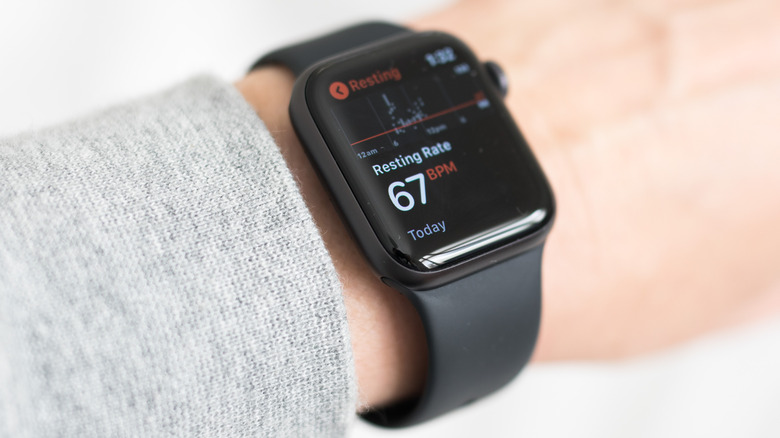What Is A Normal Heart Rate?
Heart rate is an important vital sign that can change based on whether we're active or at rest. How do we know what is considered normal?
Your heart rate, or pulse, is the number of times per minute that your heart beats, according to Johns Hopkins Medicine. When the heart pumps blood through the veins, the veins swell and shrink with the blood flow, which we can feel right below the skin. This pulse is measured by pressing lightly on these veins with the first and second fingers and counting the beats, usually on the neck or the inside of the wrist. Checking the pulse can also tell us important information about the heart rhythm and pulse strength.
When we're at rest, the least amount of blood is pumping through the body to carry the necessary amount of oxygen, called the resting heart rate (via Harvard Medical School). When we're active, our heart works hard to pump more blood and carry more oxygen to the body — this is called the maximum heart rate.
How do we know what's normal?
Your heart rate will differ according to factors like age, air temperature, emotions, position and size of the body, and use of medication (via American Heart Association). At rest, a normal heart rate is generally between 60-100 beats per minute (bpm). Lower heart rate has been shown to result in lower mortality, especially cardiovascular mortality, according to a 2019 study published in Nature Partner Journals.
However, if you notice that your heart rate is noticeably low (under 60 bpm) or high (over 100 bpm) while at rest or while active, it could be a cause for concern (via Healthline). If this is accompanied by shortness of breath, feeling light-headed or dizzy, heart palpitations, or chest pain, you should contact your doctor immediately. You can take care of your heart health by seeing a doctor for a yearly physical exam, exercising regularly, eating heart-healthy foods, lowering your alcohol and caffeine intake, reducing stress, and prioritizing sleep.


